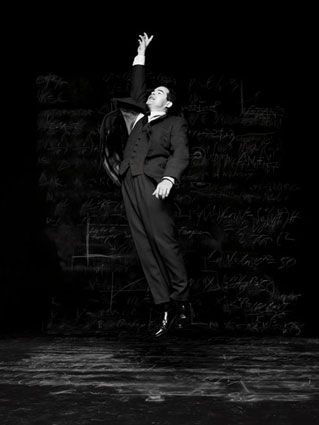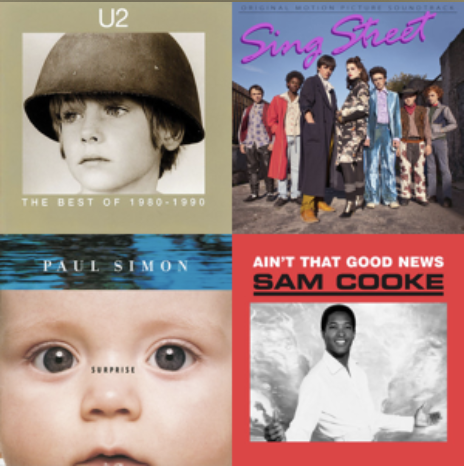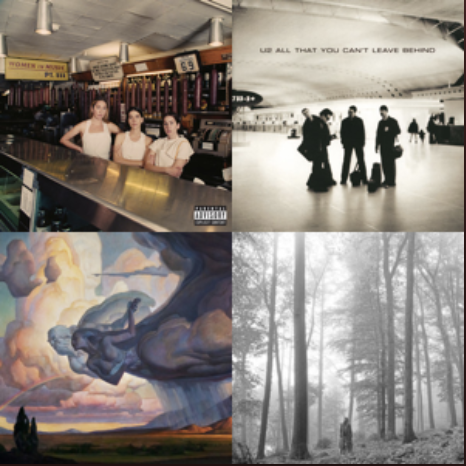
Few productions this season at the Metropolitan Opera are receiving the kind of attention and publicity that the new production of John Adams’ Doctor Atomic has. The Met’s innovative general manager, Peter Gelb, has given his full support to the production, including the significant addition of the first permanent sound system in the Met theater to play the recorded sounds (musique concrete) that are part of Adams’ musical score.
Adams composed Doctor Atomic at the request of then general director of the San Francisco Opera, Pamela Rosenberg, who wanted an American version of the Faust legend and thought that J. Robert Oppenheimer’s story would be a good fit. The opera premiered in 2005 in San Francisco, and has since been performed in Amsterdam and Chicago, before the new production was created this year for the Met, an unusual turn for an opera this young. The strong cast is headed by an excellent Gerald Finley, who premiered the role of Oppenheimer and has sung it in every production since then. This, combined with the innovative design crew of director Penny Woolcock (directing her first stage opera after a career in film) and stage designer, Julian Crouch (known for his theatrical work), has generated great excitement and some controversy in the opera world about the new production. I came to the performance with every desire that it succeed and, while I found it an exciting and thought-provoking night of theater, in the end I felt it disappointed as opera. I found myself wondering if it would make a better symphonic choral piece, or as one friend suggested, an oratorio, although the theatrical possibilities seem to demand a dramatic setting. While there is much that is praise-worthy about the production, and it is definitely worth seeing, I do not believe it ultimately succeeds as an opera.
Adams says he believes that in order to be relevant, contemporary opera must address the issues of our lives. His past operas such as Nixon in China and The Death of Klinghoffer (about the hijacking of the Achille Lauro) have pointedly addressed contemporary topics, and Doctor Atomic is no exception. It focuses on the final twelve hours before the testing of the first atomic bomb at the Trinity site in Los Alamos, NM, but also attempts to tell the story of the scientists and soldiers who built the bomb. The libretto for Doctor Atomic is unique in that it was compiled by Peter Sellars from a variety of found sources. Adams describes the process in an article for NewMusicBox:
The libretto to Doctor Atomic . . . contains everything from interview transcripts with physicists and other people involved in the creation of the bomb to declassified government documents, memoirs by Edward Teller and General Groves, and even poetry by Baudelaire, John Donne, and from the Bhagavad Gita. Oppenheimer was an immensely literate scientist, and he held poetry, especially these works, dear to his heart. In fact, in the agonizingly tense hours leading up to the Trinity test shot, while other scientists relaxed by playing poker and making a betting pool on the bomb’s yield, Oppenheimer went off by himself, took out a copy of Baudelaire poetry and tried to calm himself by reading a few stanzas. (No wonder the FBI found him a deeply suspect individual!)
During a panel discussion on the making of Doctor Atomic (with John Adams, Peter Gelb, Penny Woolcock, and Julian Crouch), it was obvious that all of those involved in the making of the opera had become fascinated with the characters and stories that intersected in the creation of the atomic bomb. From the disciplined military general Leslie Groves tasked to oversee the wide variety of “crackpot” scientists assembled to invent the bomb, to the conflicted character of Kitty Oppenheimer, a scientist in her own right who was frustrated by her “faculty wife” position in Los Alamos, to the character of J. Robert Oppenheimer himself, a highly intelligent scientist with wide literary and aesthetic interests who was both inspired by and conflicted about the making of the bomb, the people and history of this time period are clearly a rich mine of creative inspiration. The concept of a libretto composed of these peoples’ documents and recorded conversations, combined with poetry that influenced them, seemed like a compelling and innovative way to set this contemporary story.
Unfortunately, the libretto turns out to be the greatest flaw in Doctor Atomic. I came away from the performance feeling that I had seen very little in the way of character development or story, and had I not heard the panel discussion, would have understood almost nothing about who any of these people were or what drove them. The effect of hearing snippets of telegrams and classified reports, along with official letters, excerpts from books on atomic energy combined with lengthy poems (some of which related more directly to the topic at hand than others), left me feeling I had heard a rather disjointed and vague documentary, rather than watched real characters come alive on a stage. Without a clearer story line or some insight into the personal reflections of the characters (something a standard opera libretto is well able to do), I was left feeling that the people on stage were mere ciphers, acting as the mouthpiece for a specific perspective on the history of the bomb.
‚Ä¢ Check out the Metropolitan Opera’s special “minisite” for Doctor Atomic, including features, video, historical background, event listings, and a rehearsal blog.
• There are several upcoming performances of Doctor Atomic at the Met. See dates and times and purchase tickets on their website.
• Not in New York? Select movie theaters around the world will be showing uDoctor Atomic in HD on November 8 at 1:00pm ET.
Kitty Oppenheimer’s character was one of the best examples of this problem. While she was, by all reports, a fascinating and intelligent woman who both encouraged her husband’s success in building the bomb and yet was frustrated by her narrow role at Los Alamos, in the opera she is given only long, rambling settings of poetry (mostly of Muriel Rukeyser) that depict her as some sort of archetypal “eternal feminine,” serving only as a moral reminder of the consequences of the bomb. She is joined in several of her scenes by Pasqualita, a fictional Native American maid who represents the real population of Tewa Pueblo Indians who were trucked in every day to do the menial work at Los Alamos. Pasqualita also functions mainly as a stereotype – the pagan earth mother.
In the panel discussion, Woolcock discussed how intrigued she was by the combination of the differing worldviews of the three groups working together at Los Alamos. One of the effective ways she portrayed their differences was in designing different walks for the different characters, based on descriptions from the time. The Tewa people all move very slowly, in marked contrast to the scientists and soldiers who tend to rush about. The scientists lead with their heads, while the soldiers lead with their chests. Much less effective was one of the scenes of nervous anticipation before the bomb’s first test explosion where the Tewa were arrayed across the top of the set wearing animal headdresses and stern expressions. Below them, the chattering groups of scientists make wagers on the energy load of the bomb explosion and worry about safety concerns. While there are interesting comparisons to be made between these diverse groups of people and their varying worldviews, the directing, musical score and libretto rarely made these distinctions in human and nuanced ways, more often lapsing into cliché.
But there is another problem. An opera libretto is the bones upon which the meaning, found in the music and the sung voice, must be hung. The strange effect of this is that more banal librettos can actually make better operas, while lines of erudite poetry can fail to come alive when set to music. One reason for this is that poetry is written to be read and re-read, not set in a musical tempo in which the words flash by more quickly than they can be comprehended and savored. Secondly, some of the greatest lyrical poetry already contains so much music in the words, that to add sung music in an attempt to transcend it succeeds only in diluting its power. A good example of this can be found in the introduction to Donald Jay Grout’s A Short History of Opera, where he quotes this passage from Shakespeare:
The cloud-capp’d towers, the gorgeous palaces,
The solemn temples, the great globe itself,
Yea, all which it inherit, shall dissolve
And, like this insubstantial pageant faded,
Leave not a rack behind.
Grout compares it to a selection from Nahum Tate’s Dido and Aeneas:
When I am laid in earth, may my wrongs create
No trouble in thy breast. Remember me, but ah!
Forget my fate.
As Grout says of the passage from The Tempest, “it would require a composer of genius equal to Shakespeare’s to add music to such lines as these.” The second selection, while lesser poetry, serves as the perfect bones to one of the most heart-rending arias in operatic history. To be a good libretto, the words need to point to an emotional expression that only music can fully express.
Unfortunately, many of the Baudelaire and Rukeyser poems in the Doctor Atomic libretto function better as poetry than libretto, leaving the audience confused by long soliloquies that are hard to follow and convey little clear emotion, especially when they are not supported by a story line or the personal thoughts of the characters speaking them. Strangely enough, however, the setting of the John Donne poem, Batter my heart, three-person’d God, an aria for Oppenheimer that ends the first act, is one of the more effective and beautiful parts of the opera. Donne would appear to be a poet, like Shakespeare, whose words are so full of meaning and expression that it is hard to imagine music being an effective addition to them. In this case however, this particular poem being sung by Oppenheimer at this particular point in the story (as he contemplates the finished yet untested bomb he has built), adds a weight of personal meaning that the music is well-suited here to support and elucidate. This poem was one of Oppenheimer’s favorite poems (he said later that the bomb test site Trinity was named for it), and Adams sees it as Oppenheimer’s true prayer that God batter him, so that those divided parts of himself that see both the bomb’s beauty and its destruction could be made whole again. Gerald Finley masterfully portrays Oppenheimer’s soul-searching in this aria.
Other parts of the libretto see strong uses of some poetic fragments, such as the chorus’ lines from the Bhagavad Gita in response to the sight of the bomb:
At the sight of this, your Shape stupendous,
Full of mouths and eyes, feet, thighs and bellies,
Terrible with fangs, O master,
All the worlds are fear-struck, even just as I am.
The use of recorded sounds (musique concrete), in opera is still relatively unusual and controversial in some circles. Adams remains very committed to the use of recorded sound in his composition, since he believes that modern composers should be using the sound-making tools of the day as instruments, even as composers of the past adapted their music to newly invented instruments. I can understand his desire to have metallic and mechanical sounds present in his portrayal of the building of the atomic bomb, but I was disappointed by the way this sound seemed to stand outside the musical score, rather than being woven into it in a way that would truly recognize it as another musical instrument. Both of the opera’s two acts begin with an extended period of recorded sounds meant to set the stage by evoking both the era and the mood of the Los Alamos site. Strangely, each of these was a mish-mash of vague, overlapping sounds that seemed poorly recorded and oddly combined. I’ve heard better sound design in other theater shows, and the extended sequences left me longing for the presence and energy of the orchestral sound, which, when it entered, effectively left the recorded sound behind. Oddly enough, I did not notice much other musique concrete in the rest of the score, except for the end of the opera, where it is used very effectively in the countdown to the bomb explosion. The drawn-out final countdown and the quiet aftermath of the explosion are the most powerful moments in the opera and are worth attending the opera to hear and feel. It is here that Adams’ vision of using contemporary themes and modern technology to make opera relevant is most clearly realized.
A more controversial use of technology in Adams’ operas is that he requires that the singers be lightly miked, because he says that “this allows them to sing more effortlessly and it also makes the text intelligible.” This is highly controversial in opera because the wonderful resonance of the human voice cannot be fully captured by a microphone, and historically, miking voices has not produced effortless singing as much as it has bad singing technique. While some opera singers may bellow (a critique of Adams’), good technique allows a singer to fill a hall over the sound of an orchestra without requiring obvious effort. Thankfully there was no obvious sound of the singers’ voices coming through the speakers at the Met, but I did notice that an over-emphasis on pronunciation of words seemed to be interfering with the tonal quality of the singing at times. This seemed most noticeable with Sasha Cooke, who nonetheless sang a strong and lovely performance of Kitty Oppenheimer.
The preeminence of words, above the music and the voices, causes many of the problems in Doctor Atomic. I also came away from this performance having reaffirmed that I do not come to the opera to be told how to think about something, I come to the opera to have people and history come alive for me. There were scenes in Doctor Atomic where this happened in breathtaking ways, but they left me wishing the rest of the opera had risen to this standard.



